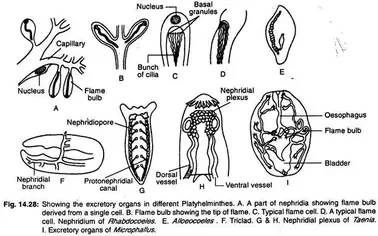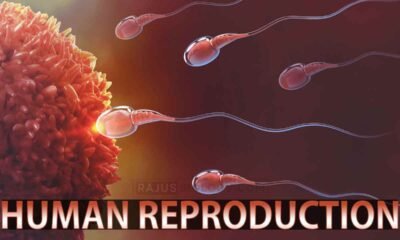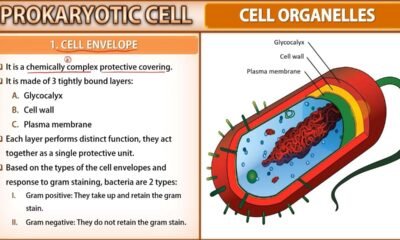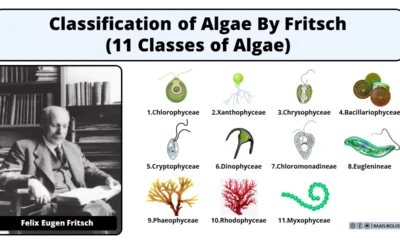Blog
Life Cycle of Taenia solium | Free Biology Notes

In this article we will discuss about life cycle of taenia solium
The Taenia solium, commonly known as the pork tapeworm, is a fascinating and intricate process that involves multiple stages of development. From eggs to larvae to adult worms, each stage plays a crucial role in the transmission and survival of this parasitic organism.
Life Cycle of Taenia Solium
Egg Stage of Taenia solium
The life cycle of Taenia solium begins with the ingestion of eggs through contaminated food or water. Once inside the human body, the eggs hatch into larvae, which then travel through the bloodstream and settle in various organs. This migration can cause tissue damage and inflammation, leading to symptoms such as abdominal pain, nausea, and vomiting. In some cases, the larvae may even reach the brain or other vital organs, causing more severe complications.
It is important to note that the egg stage of Taenia solium is not infectious to humans. In order for the parasite to complete its life cycle, it requires an intermediate host, typically a pig or a human. Once the larvae have settled in the organs, they develop into cysticerci, which are fluid-filled sacs containing the larval form of the tapeworm. These cysticerci can remain dormant for years, waiting for the opportunity to infect the definitive host.
Larval Stage of Taenia solium
The larval stage of Taenia solium is a critical phase in the life cycle of the parasite. Once the eggs have hatched and the larvae have settled in the organs, they undergo further development, growing into cysticerci. These cysticerci can be found in various organs, including the muscles, brain, and eyes. While the presence of cysticerci in the muscles may not cause noticeable symptoms, their presence in the brain can lead to serious neurological complications.
In some cases, the larvae can migrate to other parts of the body, causing widespread infection. This can lead to a condition known as cysticercosis, which is characterized by the formation of multiple cysts throughout the body. The symptoms of cysticercosis can vary depending on the location and number of cysts, but they often include seizures, headaches, and visual disturbances. In severe cases, cysticercosis can be life-threatening.
Intermediate Host of Taenia solium
The intermediate host of Taenia solium is typically a pig, although humans can also serve as intermediate hosts. When a pig or a human ingests the eggs of Taenia solium, the larvae hatch and penetrate the intestinal wall. From there, they travel through the bloodstream and settle in various organs, where they develop into cysticerci. In pigs, the cysticerci primarily localize in the muscles, while in humans, they can be found in the muscles, brain, and other organs.
It is important to note that the consumption of undercooked or raw pork products can lead to human infection with Taenia solium. This is why proper cooking of pork is essential to prevent the transmission of the parasite. Additionally, improving hygiene practices and implementing deworming programs in pig populations can help reduce the prevalence of Taenia solium infection.
Cysticercus Stage of Taenia solium
The cysticercus stage of Taenia solium is a critical phase in the life cycle of the parasite. Once the eggs have hatched and the larvae have settled in the organs of the intermediate host, they develop into cysticerci. These cysticerci are fluid-filled sacs that contain the larval form of the tapeworm. Cysticerci can be found in various organs, including the muscles, brain, and eyes.
In pigs, the presence of cysticerci in the muscles may not cause noticeable symptoms. However, in humans, the presence of cysticerci can lead to a condition known as cysticercosis. Cysticercosis is characterized by the formation of multiple cysts throughout the body, which can cause a range of symptoms depending on their location. In the brain, cysticerci can lead to seizures, headaches, and neurological complications.
Human Infection by Taenia solium
Human infection by Taenia solium occurs when individuals ingest the eggs of the parasite through contaminated food or water. Once inside the human body, the eggs hatch into larvae, which then travel through the bloodstream and settle in various organs. Over time, these larvae develop into adult worms, attaching themselves to the intestinal wall. The adult worms can produce thousands of eggs, which are then passed into the environment through the feces of infected individuals.
It is important to note that human infection with Taenia solium can be asymptomatic, with individuals being unaware that they are carrying the parasite. However, in some cases, the infection can lead to a condition known as taeniasis, which is characterized by symptoms such as abdominal pain, diarrhea, and weight loss. In rare cases, the infection can lead to more severe complications, such as intestinal obstruction or inflammation.
Symptoms of Taenia solium Infection
Symptoms and complications of Taenia solium infection can vary depending on the stage of the parasite’s life cycle and the location of the infection. In some cases, individuals may be asymptomatic, while in others, symptoms may range from mild gastrointestinal discomfort to more severe neurological complications.
In the early stages of infection, individuals may experience symptoms such as abdominal pain, nausea, and diarrhea. As the infection progresses, symptoms may worsen and include weight loss, weakness, and fatigue. If the larvae migrate to the brain or other vital organs, more severe symptoms can occur, including seizures, headaches, and visual disturbances.
In rare cases, complications of Taenia solium infection can be life-threatening. In the brain, the presence of cysticerci can lead to neurocysticercosis, which can cause seizures, hydrocephalus, and even death. Inflammation and obstruction of the intestine can also occur, leading to severe abdominal pain, vomiting, and intestinal perforation. Prompt diagnosis and treatment are crucial to prevent the progression of the infection and reduce the risk of complications.
Diagnosis and Treatment of Taenia solium Infection
The diagnosis of Taenia solium infection typically involves a combination of clinical evaluation, imaging tests, and laboratory tests. Imaging tests, such as computed tomography (CT) or magnetic resonance imaging (MRI), can help identify the presence and location of cysticerci in the body. Laboratory tests, such as serology or stool examination, can help confirm the presence of the parasite or its eggs.
The treatment of Taenia solium infection depends on the stage of the infection and the location of the parasite. In cases of taeniasis, medication such as praziquantel or niclosamide is typically prescribed to kill the adult worms in the intestines. For neurocysticercosis, a combination of medication and surgery may be necessary to remove or reduce the number of cysticerci in the brain. In some cases, antiepileptic medication may also be prescribed to manage seizures.
It is important to note that prevention is key in the control of Taenia solium infection. Improving hygiene practices, such as washing hands before handling food and cooking pork thoroughly, can help reduce the risk of infection. Additionally, implementing deworming programs in pig populations and educating communities about the risks and symptoms of Taenia solium infection can help raise awareness and prevent transmission.
Prevention and Control of Taenia solium Infection
Prevention and control of Taenia solium infection require a multi-faceted approach that involves improving hygiene practices, implementing deworming programs, and educating communities about the risks and symptoms of the infection.
Proper hygiene practices, such as washing hands with soap and water before handling food, can help reduce the risk of ingesting the eggs of Taenia solium. Cooking pork thoroughly, until it reaches an internal temperature of 160°F (71°C), can also kill any potential larvae or cysticerci present in the meat.
Implementing deworming programs in pig populations is crucial to reducing the prevalence of Taenia solium infection. This can involve administering deworming medication to pigs and implementing strict sanitation practices in pig farms to prevent contamination of the environment with pig feces.
Educating communities about the risks and symptoms of Taenia solium infection is essential for raising awareness and promoting early diagnosis and treatment. This can be done through community health campaigns, school programs, and public health initiatives.
In conclusion, the life cycle of Taenia solium is a complex process that involves multiple stages of development. From eggs to larvae to adult worms, each stage plays a crucial role in the transmission and survival of this parasitic organism. By understanding the life cycle of Taenia solium, researchers and healthcare professionals can develop effective strategies for prevention and treatment. Whether it’s improving hygiene practices, implementing deworming programs, or educating communities about the risks and symptoms, this knowledge is crucial for combating the spread of this parasitic infection.

 Blog7 months ago
Blog7 months ago[PPT] Human Reproduction Class 12 Notes
- Blog7 months ago
Contribution of Indian Phycologists (4 Famous Algologist)
- Blog7 months ago
PG TRB Botany Study Material PDF Free Download

 Blog7 months ago
Blog7 months agoCell The Unit of Life Complete Notes | Class 11 & NEET Free Notes

 Blog7 months ago
Blog7 months ago[PPT] The living world Class 11 Notes

 Blog7 months ago
Blog7 months agoClassification of Algae By Fritsch (11 Classes of Algae)

 Blog7 months ago
Blog7 months agoJulus General Characteristics | Free Biology Notes
- Blog7 months ago
Class 12 Biology Notes Chapter wise PPT












